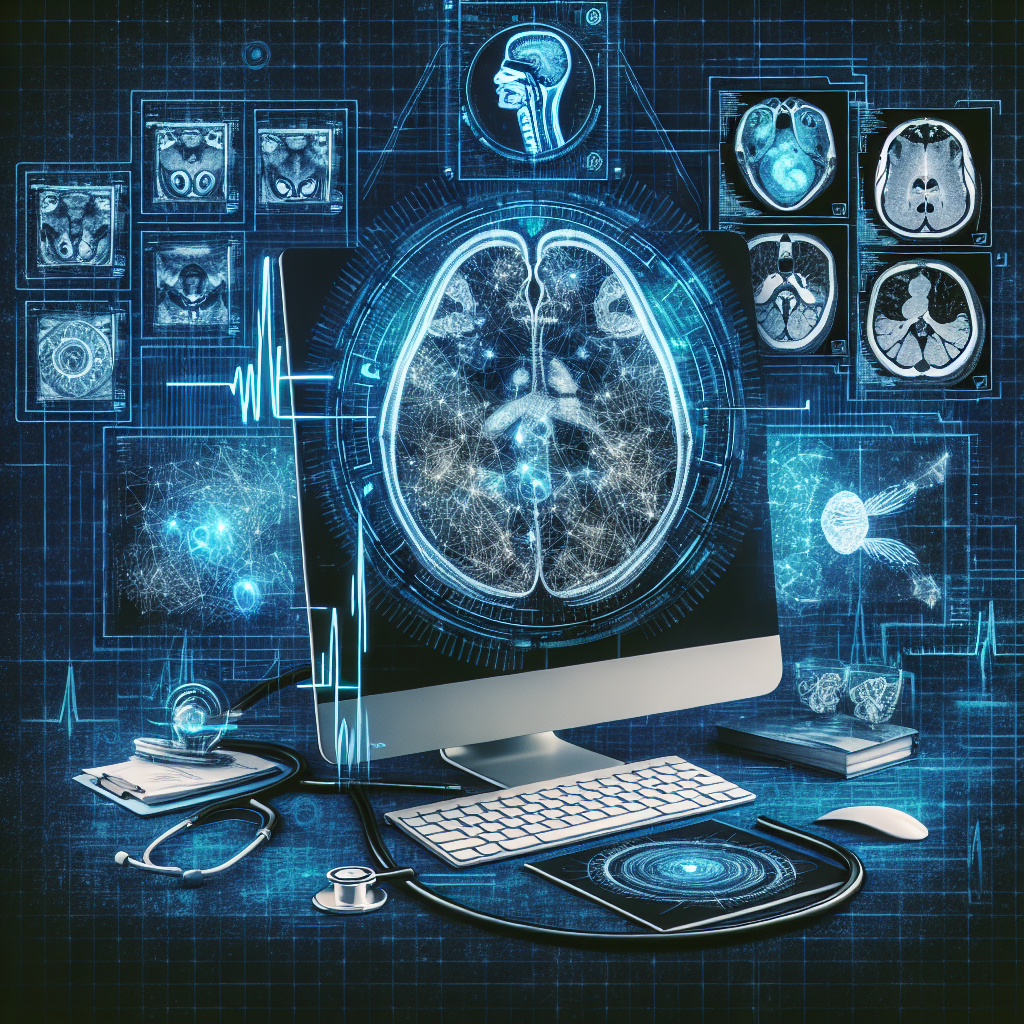AI Integration in Medical Imaging: Improving Diagnosis
Medical imaging has long been an essential tool in the field of healthcare, allowing doctors to visualize and diagnose a wide range of medical conditions. From X-rays and CT scans to MRIs and ultrasounds, these imaging techniques have revolutionized the way healthcare providers understand and treat diseases.
With the advent of artificial intelligence (AI) technology, medical imaging has taken a giant leap forward in terms of accuracy, efficiency, and overall patient care. AI algorithms can now analyze medical images with incredible speed and precision, helping doctors to make more accurate diagnoses and treatment decisions.
In this article, we will explore the impact of AI integration in medical imaging, how it is improving diagnosis, and the potential benefits and challenges of this technology.
How AI is Improving Diagnosis in Medical Imaging
AI technology has the potential to revolutionize medical imaging in several key ways:
1. Faster and More Accurate Diagnoses: AI algorithms can analyze medical images in a fraction of the time it would take a human radiologist. This means that patients can receive a diagnosis much faster, leading to quicker treatment and better outcomes. Moreover, AI can detect subtle abnormalities that may be missed by human eyes, leading to more accurate diagnoses.
2. Personalized Medicine: AI can analyze a patient’s medical images along with other health data to create personalized treatment plans. For example, AI algorithms can predict how a specific tumor will respond to different treatments based on its characteristics, allowing doctors to tailor treatment to individual patients.
3. Reduced Healthcare Costs: By streamlining the diagnostic process and improving accuracy, AI can help reduce healthcare costs. Fewer misdiagnoses mean fewer unnecessary tests and treatments, saving both patients and healthcare providers money.
4. Remote Monitoring: AI-powered imaging systems can be used to monitor patients remotely, allowing doctors to track disease progression and treatment efficacy without the need for frequent in-person visits. This is especially useful for patients in rural or underserved areas.
5. Enhanced Training and Education: AI can be used to train and educate medical professionals, providing them with real-time feedback on their diagnostic skills. This can help improve the overall quality of care and reduce diagnostic errors.
Challenges and Limitations of AI Integration in Medical Imaging
While the potential benefits of AI integration in medical imaging are clear, there are also several challenges and limitations that need to be addressed:
1. Data Privacy and Security: AI algorithms require access to large amounts of patient data to train and improve their performance. Ensuring the privacy and security of this data is essential to protect patient confidentiality.
2. Regulatory Approval: AI algorithms used in medical imaging must undergo rigorous testing and validation to ensure their safety and efficacy. Obtaining regulatory approval can be a lengthy and expensive process.
3. Integration with Existing Systems: Integrating AI technology into existing medical imaging systems can be complex and costly. Healthcare providers may need to upgrade their infrastructure and train staff to use the new technology effectively.
4. Bias and Fairness: AI algorithms can inadvertently perpetuate biases present in the data they are trained on. It is essential to address issues of bias and fairness to ensure that AI technology benefits all patients equally.
5. Liability and Accountability: In cases where AI algorithms make diagnostic errors, determining liability and accountability can be challenging. Clear guidelines and regulations are needed to address these issues.
Frequently Asked Questions about AI Integration in Medical Imaging
Q: How accurate are AI algorithms in diagnosing medical conditions?
A: AI algorithms have been shown to be highly accurate in diagnosing a wide range of medical conditions, often outperforming human radiologists. However, their performance can vary depending on the quality of the data they are trained on and the specific task they are designed to perform.
Q: Will AI technology replace human radiologists?
A: While AI technology can assist radiologists in making more accurate diagnoses, it is unlikely to replace human radiologists entirely. Radiologists play a critical role in interpreting medical images and providing context to the AI-generated findings.
Q: How can healthcare providers ensure the safety and efficacy of AI algorithms?
A: Healthcare providers should conduct rigorous testing and validation of AI algorithms before integrating them into clinical practice. This includes assessing their performance on a diverse range of patient populations and ensuring they meet regulatory standards.
Q: What are some of the ethical considerations surrounding AI integration in medical imaging?
A: Ethical considerations include issues of privacy, data security, bias, and fairness. Healthcare providers must ensure that patient data is protected, that AI algorithms are free from bias, and that the benefits of AI technology are equitably distributed among all patients.
Q: How can patients benefit from AI integration in medical imaging?
A: Patients can benefit from faster and more accurate diagnoses, personalized treatment plans, and reduced healthcare costs. AI technology can also improve access to healthcare services, especially for patients in remote or underserved areas.
In conclusion, AI integration in medical imaging has the potential to revolutionize the field of healthcare by improving diagnosis, treatment, and patient outcomes. While there are challenges and limitations that need to be addressed, the benefits of AI technology far outweigh the risks. By harnessing the power of AI, healthcare providers can provide more personalized, efficient, and effective care to their patients.

